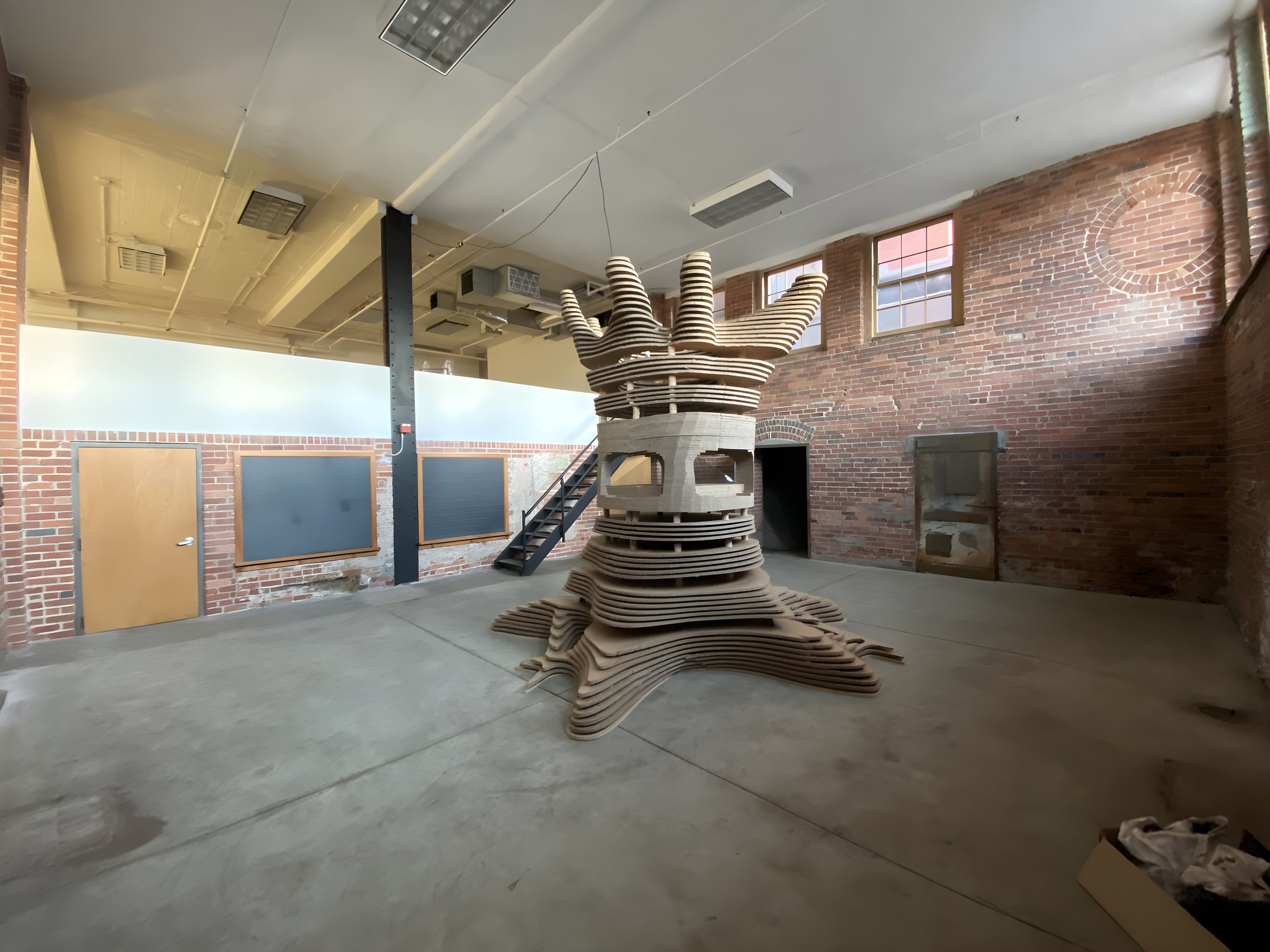
Root Network
PROJECT DETAILS
EXHIBITION
RITE OF SPRING-BREAK
YEAR
2022
LOCATION
Denver
MATERIALS
Cardboard, Wood, MDF, Acrylic, Felt, Television
SOFTWARE
Blender, Slicer for Fusion 360, Illustrator, Deepnest.io, VCarve, DaVinci Resolve
MY ROLE
3D Modeller, Video Editor, Fabricator, Installer
TEAM
Me + A Friend for Install
TIMELINE
Design Research: 6 months
Fabrication: 2 months
Install: 10 hours
PROJECT DESCRIPTION
Root Network is the central component of the larger Sense Energetic Exhibition. Consisting of a 12’ x 12’ tree-like structure featuring five roots representing the five energy centers that can be found within the physical body of a human; extending into seven branches to include those centers that exist outside the body. Interaction is facilitated through a semi-holographic projection located in the heart of the tree.
BRIEF
Create a large scale interactive installation that affords participants the opportunity to experience the immense potentialities that can only emerge from group intention and collective behavior.
INSIGHT
Due to the scale of this artwork, the final form was mandated by the exhibition space. There were three main requirements in mind: multi-participant interactions, large central element with multiple supporting elements on the periphery, and digitally-mediated experiences. Over the six month research period, I spent considerable time in the space in order to extrapolate the possibilities.
During a month long residency in Finland, I continued to ideate on the possibilities for the form and interaction of this piece
Once the overall form of the installation was concretized, I created a more precise 1:1 scale 3D model of the varying pieces in Blender utilizing a combination of methods mostly consisting of repeated skin and boolean modifiers, as well as organic modeling for the final aesthetic touches. The model was then imported into Fusion 360 to add a number of parametric elements in order to facilitate easier fabrication and installation.
The finished 3D model was then sliced and prepared for cutting on a 4x8 foot 3-axis CNC router. Since each layer that needed to be cut consisted of 3 sheets of cardboard, I developed a novel “cassette” style CNC fixture in order to firmly hold the material during cutting. The “cassette” approach also allowed for quick and relatively effortless switching of material for subsequent cuts. With material tests and the CNC fixture figured out, I then endeavored to cut over 100 different files on the CNC, totaling over 60 hours of machine time.